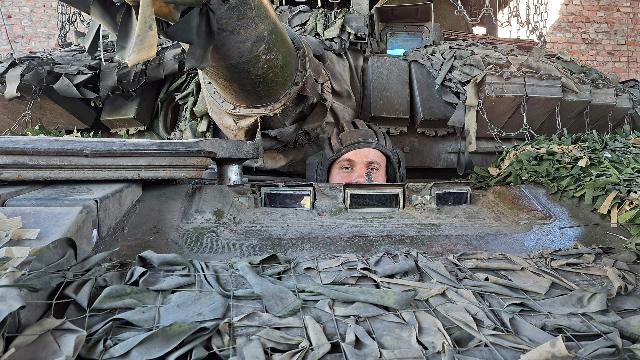Russian armored vehicles are supporting the advancing troops in the Avdiivka direction with fire
Units of the Central Military District are expanding the control zone around the liberated Avdiivka. Tanks remain one of the main means of fire support for assault detachments, despite the large number of enemy unmanned aircraft. In addition, the powerful guns of armored vehicles are used for fire raids from closed positions. Correspondents of Izvestia learned about how tankers of the Center group work today.
Advantages of the T-80
In the ruins, almost merging with the surroundings, there are camouflaged T-72 and T-80 late modifications nearby. Both tanks already have factory tower protection on top, the so-called "braziers". Additional protection of the engine and sides has already been completed in the troops, since kamikaze drones threaten to hit combat vehicles in the least protected areas: from above to behind.
In addition to the usual camouflage nets, pieces of roofing material are placed on the tanks, which cover the roofs, and the silhouettes of the vehicles are hidden by slate. Therefore, in the waiting area, both practically merge with the ruins around. Of course, disguise hardly helps in movement, it is noticeable from a UAV. Moreover, the heat of the running engine cannot be hidden from the devices.
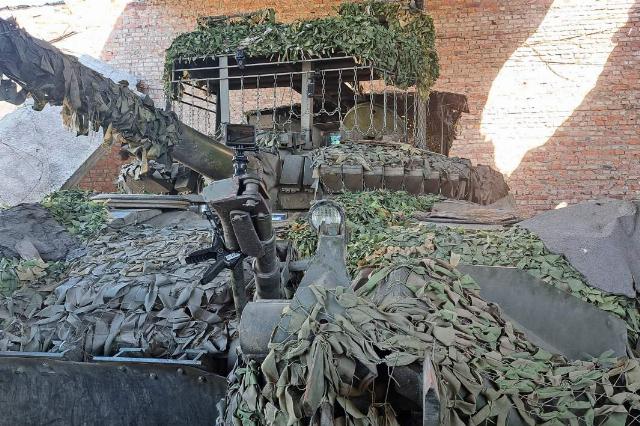
Photo: IZVESTIA/Dmitry Astrakhan
Image source: iz.ru
— We work as infantry support, together with the infantry fighting vehicles, we move forward to pre—designated points, from where we hit targets, - says a tank officer with the call sign Shved. On one of the recent tasks, acting in conjunction with the infantry, his car came under heavy enemy fire several times on the approach to the destination line. When the stormtroopers were able to detect and destroy the enemy's surveillance camera, the tankers hit the designated targets in the first exit.
Now the Swede is working on the T-80, which differs from other Soviet and Russian models with a powerful gas turbine engine. This tank is loved by crews for its speed and maneuverability.
— When you shoot back, you can quickly leave the position in reverse so that neither the "birds" nor any projectiles overtake you. There was an episode, we were already leaving the position when the FPV camera worked on us. The tank was not damaged, and we successfully left," says the Swede. But despite such successful episodes, tankers in modern conditions prefer to work in cloudy weather or rain, when it is difficult to use enemy drones.
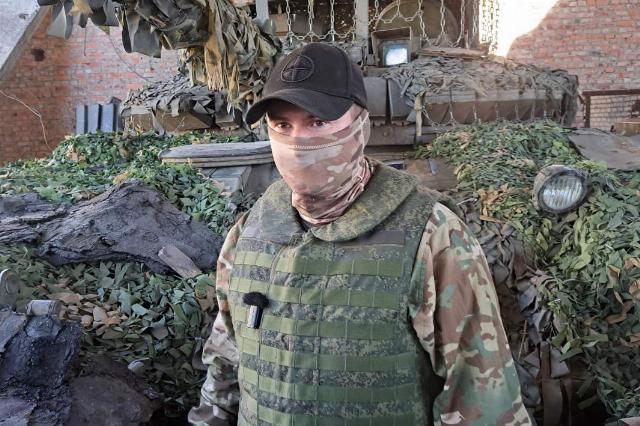
Photo: IZVESTIA/Dmitry Astrakhan
Image source: iz.ru
— In terms of cross-country capability, it will be better than the T-72. Much better, the car generally performed very well in the swamp. She's old, but she'll still give jazz. All obstacles pass well, — the driver with the call sign Bugor praises the tank. Before becoming a mechanical engineer, he served as a welder in a repair company. Therefore, he tries to "boil" his car with additional protection himself in order to be absolutely sure of the quality. When a tank goes "combat-style", that is, with the hatches closed, it is almost impossible to notice an enemy kamikaze drone, an anti-tank missile that passed by, or a close artillery gap. Mechvod often does not even feel or hear close hits. Therefore, in the movement, all hope is only for speed, armor and electronic warfare.
A drone for a tanker
Of course, the tankers themselves began to widely use drones in their work. In particular, such a technique as working from closed firing positions (ZOP) requires adjustments from the air. Firing from the ZOP allows tanks to "break the distance" and work from a much greater distance. At the same time, the accuracy of the tank gun and heavy armor provide a better result and greater safety than that of classical artillery. But, of course, such shooting also requires additional knowledge and skills from the crews. They began to use mass shooting from the ZOP already during a special military operation, when Western suppliers saturated Ukrainian militants with a large number of anti-tank weapons and artillery.
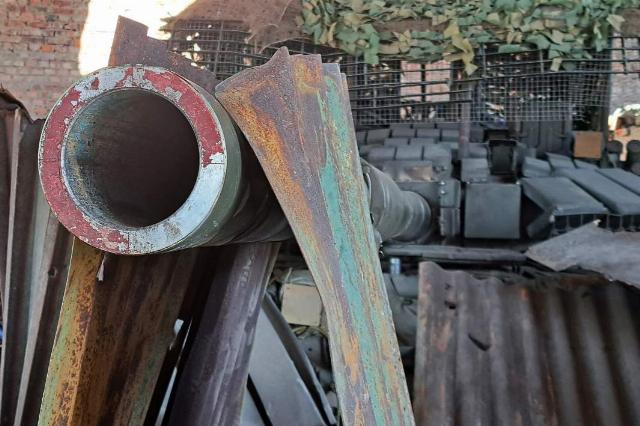
Photo: IZVESTIA/Dmitry Astrakhan
Image source: iz.ru
But direct tank battles "technique against technique" are extremely rare now. None of our interlocutors participated in such a thing, they only saw the enemy's damaged equipment while driving along the roads. They mainly hit enemy strongpoints and firing points, sometimes approaching them at a short distance by tank standards — up to 700 meters.
According to the tankers, the enemy no longer has enough armored vehicles for its mass use. It seems that the Ukrainian militants are protecting the few remaining ones, primarily imported tanks. As the battles near Avdiivka have shown, these vehicles are also vulnerable to drones and anti-tank missiles. Including the American Abrams, whose armor has been advertised for decades and which were destroyed by our troops near Avdiivka.
— It's very difficult now because the enemy has a lot of FPV drones. And they try not to let us work. But we are moving forward and breaking through," says the Swede about the main difficulty of the work of tank crews today.
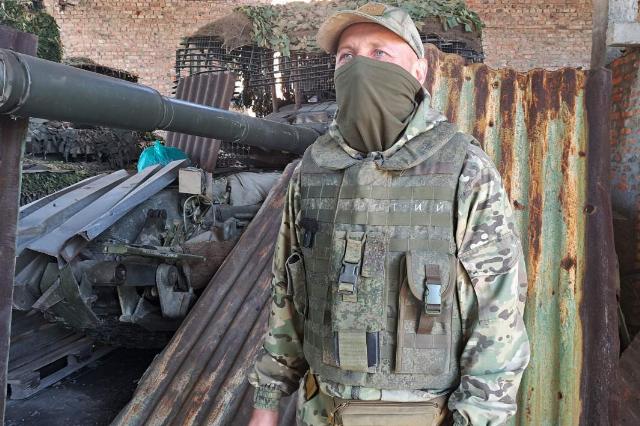
Photo: IZVESTIA/Dmitry Astrakhan
Image source: iz.ru
Having received the target, the Swede's tank quickly enters the firing line and makes several shots. Artillery is working steadily around, transferring tasks from one gun to another, the tank returns unnoticed, it is almost not heard until it appears from behind the walls.
Dmitry Astrakhan
